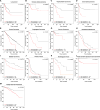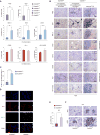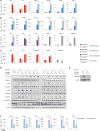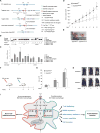GADD45β Loss Ablates Innate Immunosuppression in Cancer
- PMID: 29279355
- PMCID: PMC5935595
- DOI: 10.1158/0008-5472.CAN-17-1833
GADD45β Loss Ablates Innate Immunosuppression in Cancer
Abstract
T-cell exclusion from the tumor microenvironment (TME) is a major barrier to overcoming immune escape. Here, we identify a myeloid-intrinsic mechanism governed by the NF-κB effector molecule GADD45β that restricts tumor-associated inflammation and T-cell trafficking into tumors. In various models of solid cancers refractory to immunotherapies, including hepatocellular carcinoma and ovarian adenocarcinoma, Gadd45b inhibition in myeloid cells restored activation of proinflammatory tumor-associated macrophages (TAM) and intratumoral immune infiltration, thereby diminishing oncogenesis. Our results provide a basis to interpret clinical evidence that elevated expression of GADD45B confers poor clinical outcomes in most human cancers. Furthermore, they suggest a therapeutic target in GADD45β for reprogramming TAM to overcome immunosuppression and T-cell exclusion from the TME.Significance: These findings define a myeloid-based immune checkpoint that restricts T-cell trafficking into tumors, with potentially important therapeutic implications to generally improve the efficacy of cancer immunotherapy. Cancer Res; 78(5); 1275-92. ©2017 AACR.
©2017 American Association for Cancer Research.
Conflict of interest statement
The authors declare no competing financial interests.
The authors declare no conflicts of interest.
Figures







References
Publication types
MeSH terms
Substances
Grants and funding
LinkOut - more resources
Full Text Sources
Other Literature Sources
Molecular Biology Databases

